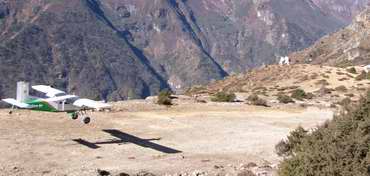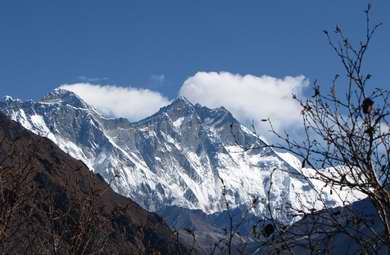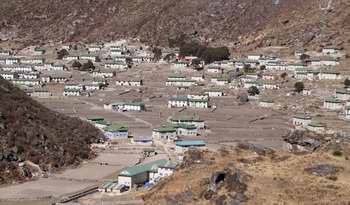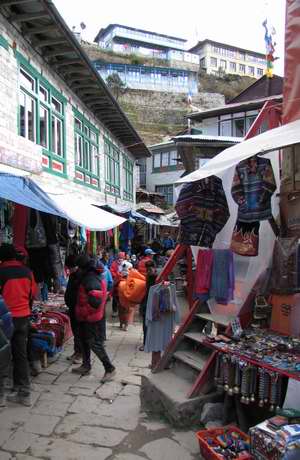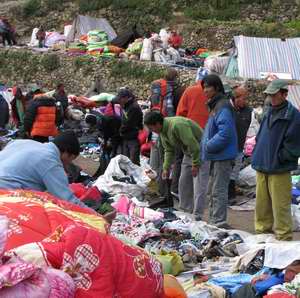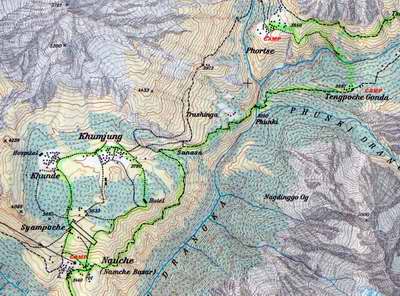
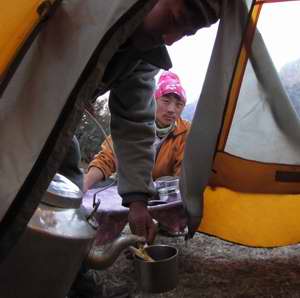
Bed tea is brought to the tent |
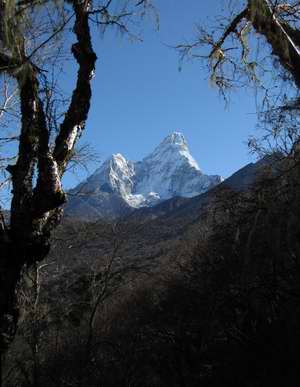
Ama Dablan from the trail up to Tengpoche |
The huge monastery dominated the village, which had a few western/trekker orientated tea houses and a bakery. Our tents were pitched in front of the bakery at the north end of the large square outside the monastery. We had arrived just before 10.00, so there was plenty of time to try the coffee (first cappuccino of the trip!) and cakes (solid) and to explore before lunch.
Today was the first day of the Mani Rimpoche festival and at about 13.00 a pair of monks in an upstairs window of the monastery started sounding the deep throaty long horns. These rumbling sounds carried on for about half an hour before two other monks, at a different window, started blowing their conch shells.
Just before 14.00 (and after three black horses had trotted down the steps of the monastery) the procession started; monks in their Smurf-like orange hats, horns, banners, and eventually the Llama under an orange parasol all came down the steps. They followed a route that had been marked out in white sand, with decorative symbols every few metres, that led to a stage set behind the monastery. Here, for over an hour, there was a blessing ceremony; it was hard to comprehend.exactly what was going on. Whatever it was was accompanied by constant chanting through a sometimes faulty loudspeaker.
Large teapots of milky sweet tea were brought round to the monks and to the whole crowd - a mixture of locals and (mostly) trekkers. Biscuits were brought round by the younger monks. Plates of goodies (including the ubiquitous yellow packets of biscuits) were offered to the locals who were participating in the ceremony by sitting on the ground between the lines of sitting monks.
The ceremony continued with notable locals (including Panuru, our sirdar, and his wife) offering scarves to the Llama and then offering banknotes to each and every one of the monks.
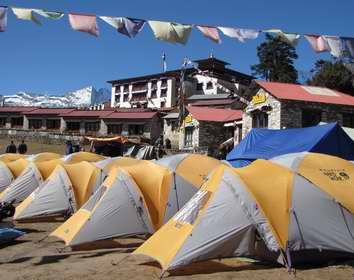
Camping by Tengpoche Monastery |
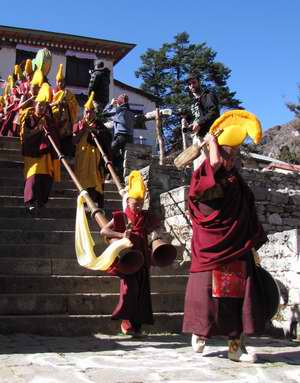
Monks descending in procession with the large horns |
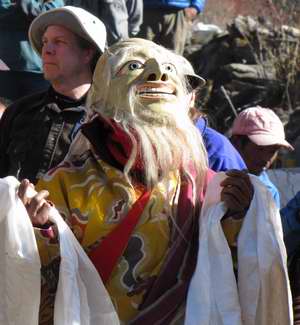
Monk in disguise in procession |
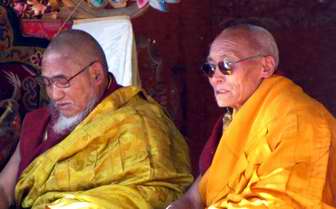
Senior monks watching the ceremony |
The mountains remained unmoved by all this ceremony. Everest looked particularly devoid of snow. and cloud was billowing out from Lhotse. Ama Dablan looked magnificent when framed by prayer flags around the square and the monastery gateway.
It was a chilly evening, and slightly odd sleeping in the square with people walking and talking just outside.
At 03.45 the monks started banging gongs and blowing their horns and conch shells again (in succession, not simultaneously!). Luckily this morning devotion only lasted half an hour.
Wednesday 4 November
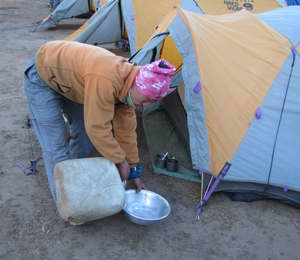
The cook-boy brings washing water to the tent |
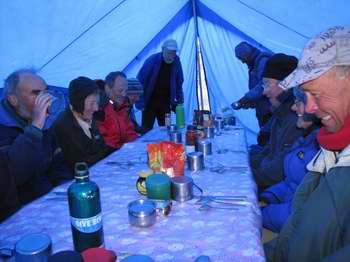
Waiting for porridge to be served |
We arrived above Namche Bazaar, tucked in its bowl, at 13.15 and walked down through the terraces packed with large stone lodges to a small field tucked behind the Sakura Lodge where our tents had been erected.
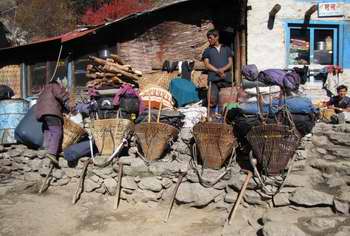
Porters baskets and staves outside a tea-house |
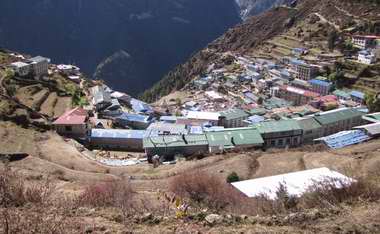
Arriving above Namche |
Right at the base of the bowl in which Namche was situated was the very colourful market where mainly Chinese made goods were on sale - copies of everything from Nike trainers to North Face jackets.
Some of us returned to the camp for tea at 15.00 and then headed back to the shops (ha ha, what three weeks without shops does to one!) where I bought a knitted fleece-lined jacket for 1600 rupees. We even hit a bar (or rather the highest bar in the world) and had drinks to rock music before dinner.
